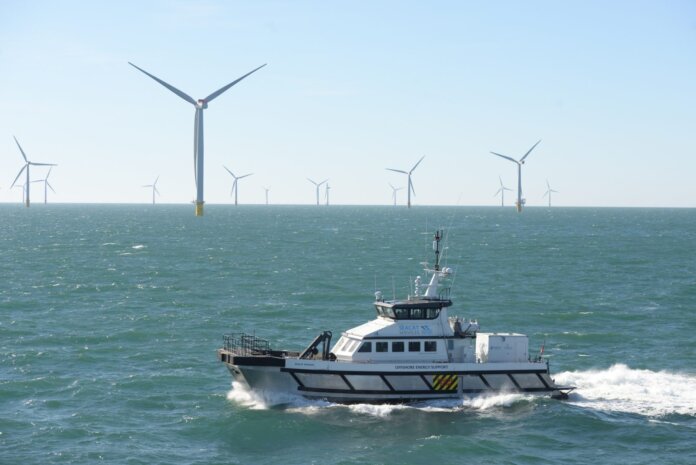A €3.6 million European project to study the psychological and physiological well-being of crew being transferred to offshore wind farms in rough waters has produced a sail/no sail decision-support tool for marine coordinators – as well as a new understanding of seasickness and how it develops.
Unscheduled operations and maintenance operations on offshore wind installations account for almost a quarter of the lifetime cost of an offshore farm, but a large portion of that is time wasted in failed crew transfers or workers unable to carry out their duties as a direct result of adverse weather conditions.
“This project has been ground-breaking. For the first time, we have used data, gathered in laboratories and out in the field, to truly understand the psychological and physiological impacts on offshore wind farm technicians during transit,” says Andrew Stormonth-Darling, project manager at Offshore Renewable Energy (ORE) Catapult.
“The model and tool will improve the health, safety and well-being of technicians and the productivity of offshore wind farms, allowing wind farm marine coordinators to make more informed decisions on vessel design for particular sites and when to authorize transits,” he adds.
The two-year DemoWind2-funded Improving the Safety and Productivity of Offshore Wind Technicians in Transit (SPOWTT) project, coordinated by the ORE Catapult through its O&M Center of Excellence collaboration with the University of Hull, was completed in March. The project involved seven partners from across Europe, including Siemens Gamesa Renewable Energy (SGRE), the University of Hull, marine coordinator SMC Ltd., Dutch research institutes MARIN and TNO, and BMO Offshore, a data service provider to the offshore wind industry.
The data-driven model seeks to understand the complex relationship between environmental conditions and vessel design and their combined impact on technicians and has given us a new understanding of seasickness and how likely it is to develop. Studies were carried out, both in the field and in controlled conditions, on various vessel types to understand how they behave in different weather conditions. Empirical data was also gathered directly from the technicians themselves during transit over a period of several months.
TNO used this seasickness model, coupled with vessel behavior data from MARIN (validated with measurements by BMO), to provide more realistic logistics simulations to assist offshore wind farm planners. U.K. marine consultants SMC Ltd. is building on this to commercialize decision-support software aimed at marine coordinators, which could transform the industry’s approach to technician-led operations and maintenance activities.
Photo: Crew transfer vessel at Galloper




